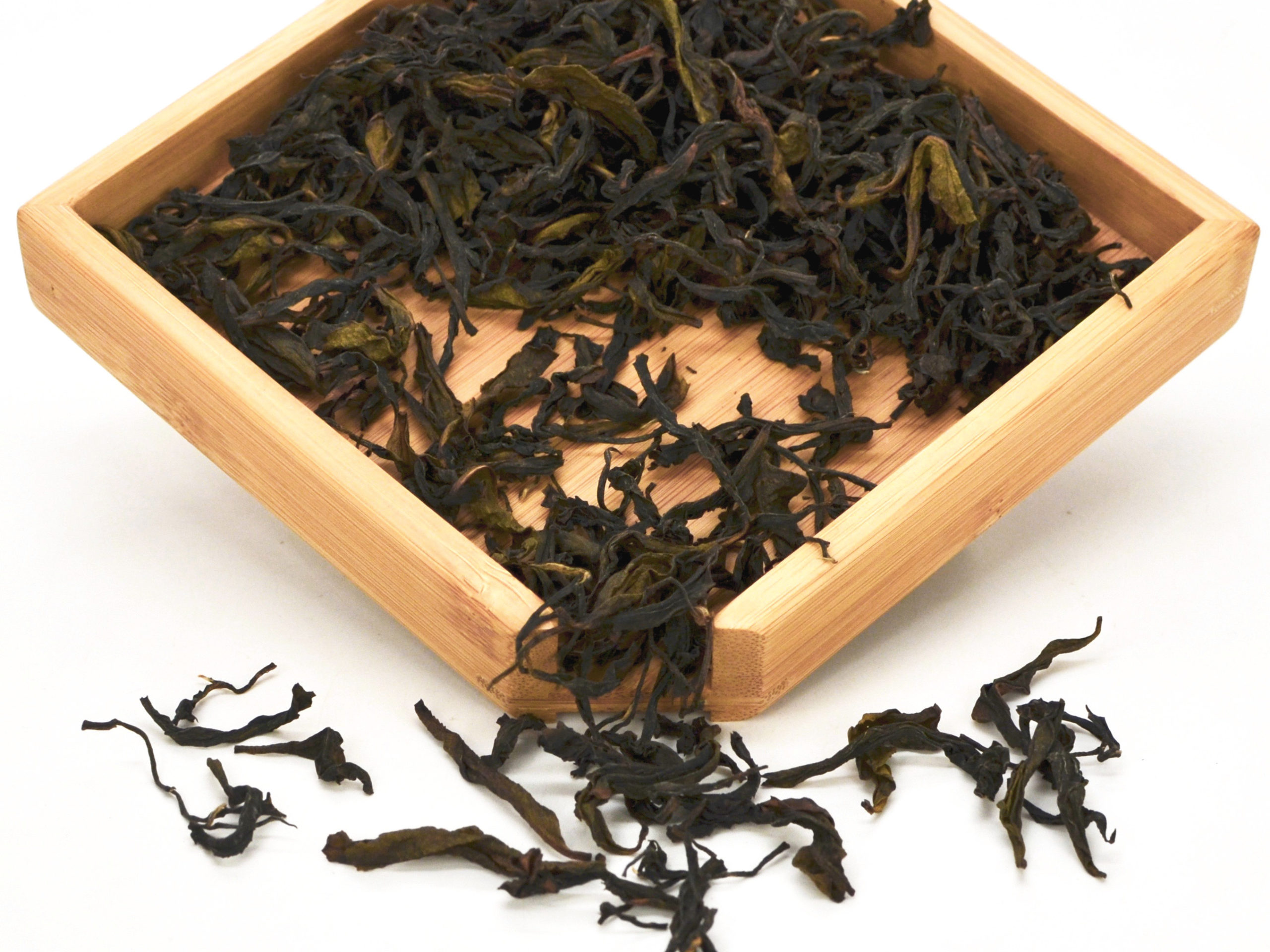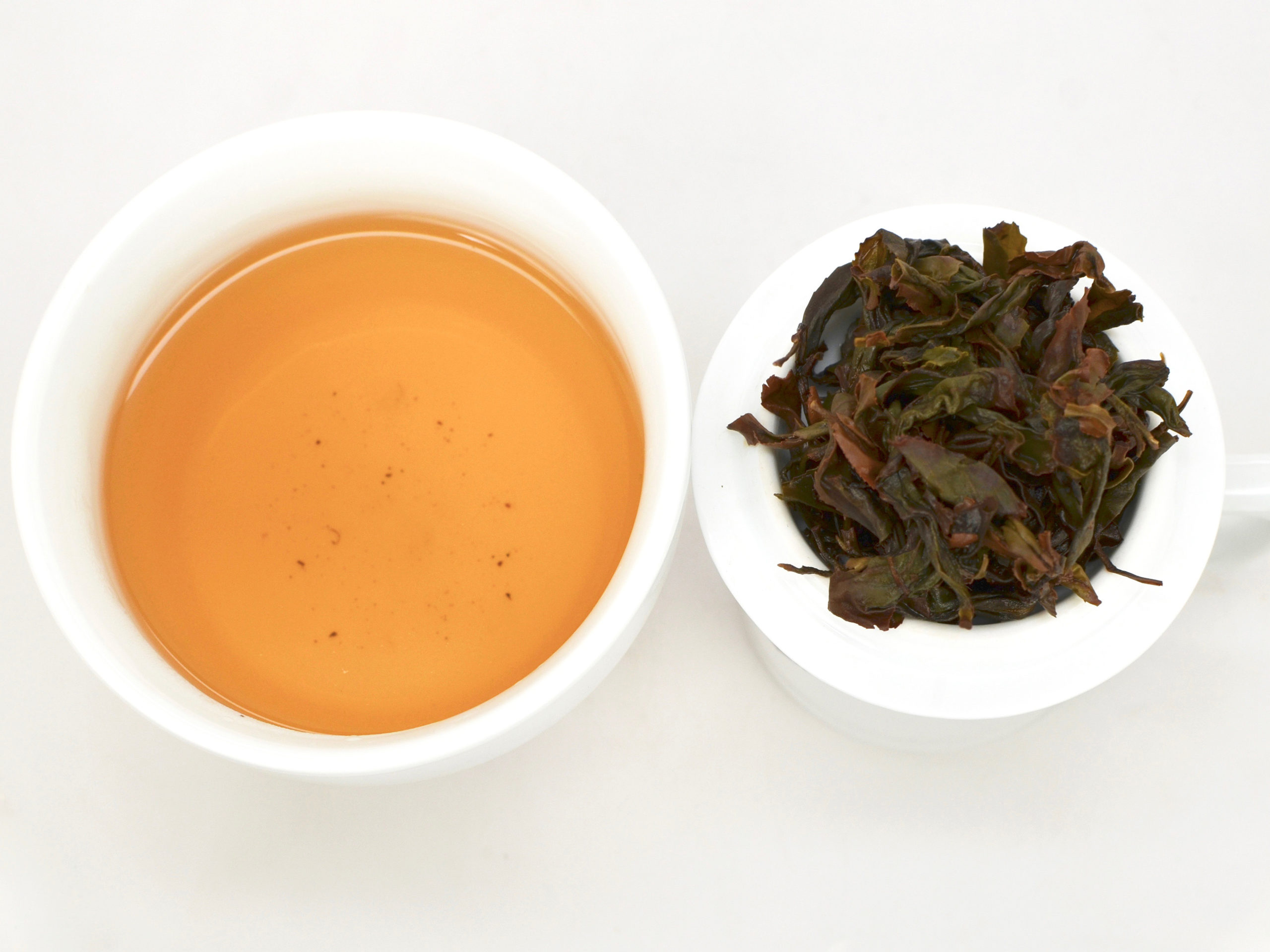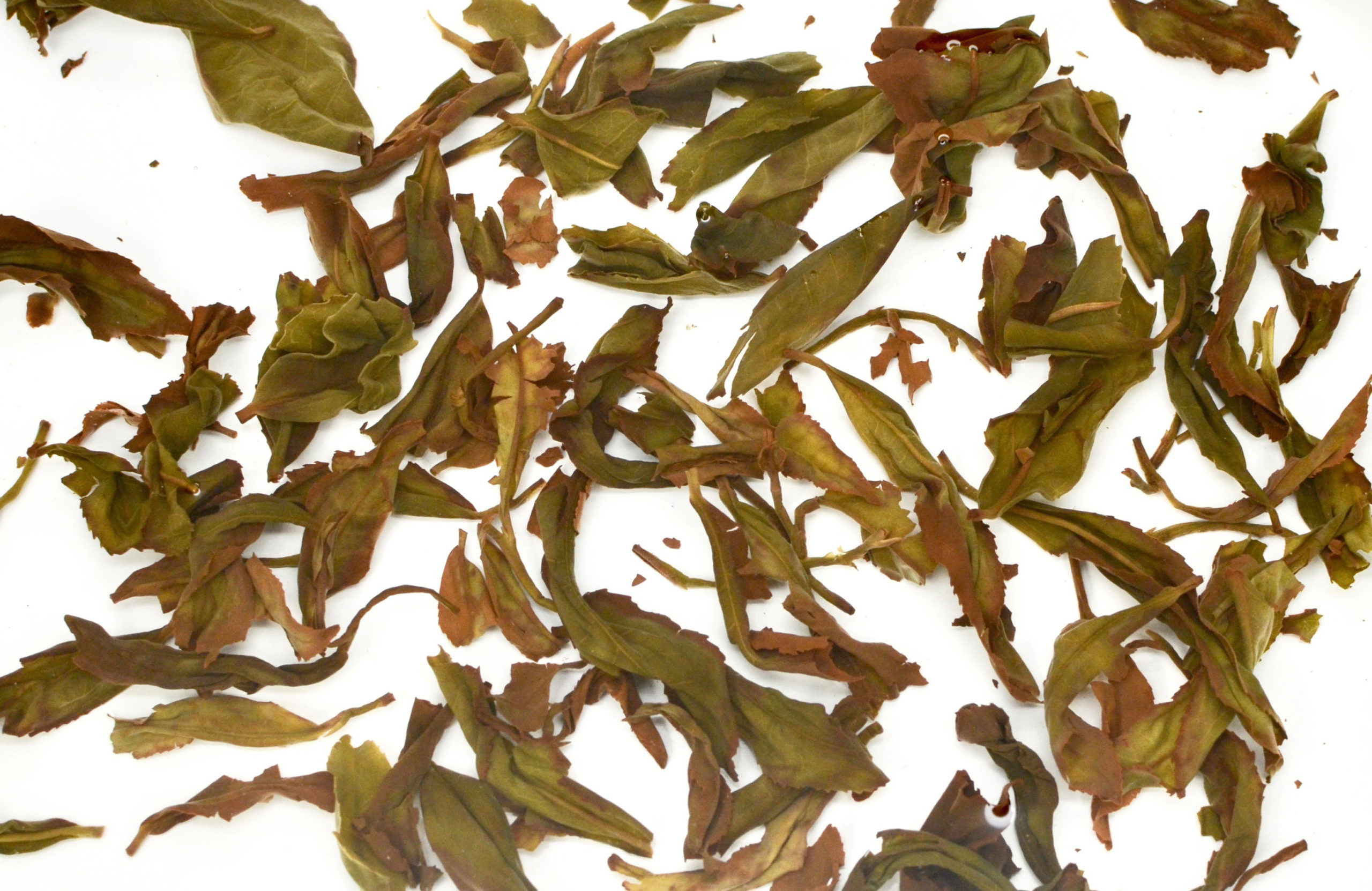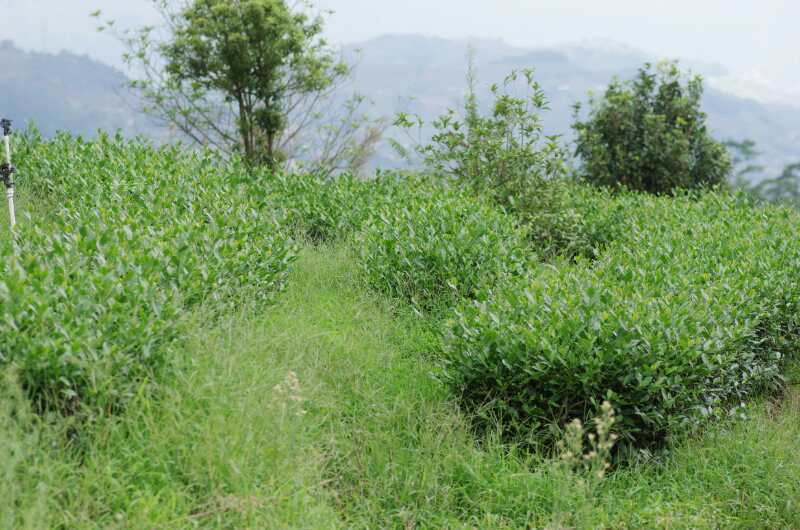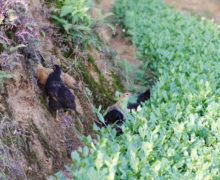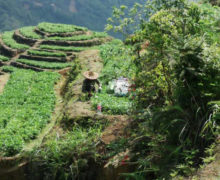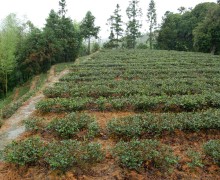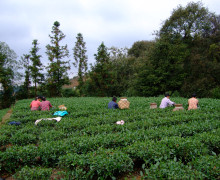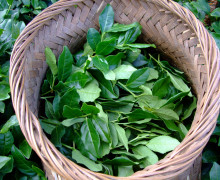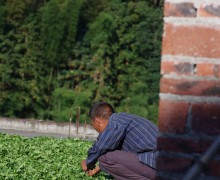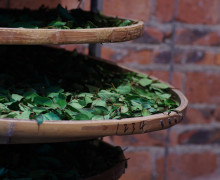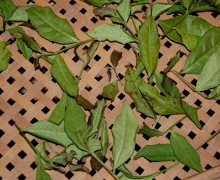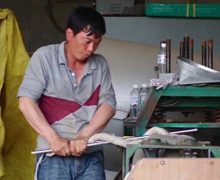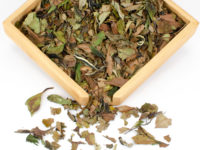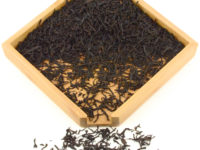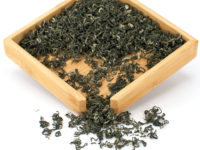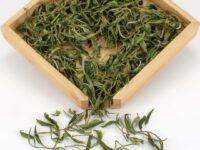Chuantong Tieguanyin (Traditional Tieguanyin)
Anxi Wulong Tea 2025
The sweet and complex flavor of Traditional Tieguanyin is darker and deeper than green-style Anxi wulong, with a caramel-like candied-nut aroma. It is lighter roasted than rock wulong but processed in the same traditional style with long dark twisted leaves. Its sweetness and medium roast make it an excellent introductory wulong that is neither too light nor too dark.
- Tea Origin
- Anxi County, Fujian Province, China
- Tea Bush
- Hongxin Tieguanyin (Red Heart Tieguanyin)
- Tea Maker
- Zhang Shuiquan and Zhang Qingjian
- Harvest Time
- Late April
- Plucking Standard
- Xiao kai mian
Chuantong Tieguanyin (Traditional Tieguanyin) wulong is considerably darker in character than the modern “green-style” Anxi wulong familiar to most people, like our Jin Guanyin (Golden Tieguanyin). Instead of being compressed into compact “pearls,” Chuantong Tieguanyin retains the traditional long, dark, twisted wu long “black dragon” leaf shape, much like most other dark wulongs. Its heavier oxidation and long roasting give it a greater depth and layered complexity of flavor than modern Anxi wulong, as well as a sweet finish. However, it remains lighter than other dark wulongs. Characteristic of the Tieguanyin tea cultivar, the infused tea remains very clean and clear, but with a bright golden orange color. Under stronger oxidation and roasting, Tieguanyin’s intense fresh floral aroma transforms into a caramel-like sweet candied-nut fragrance.
What does Tieguanyin mean?
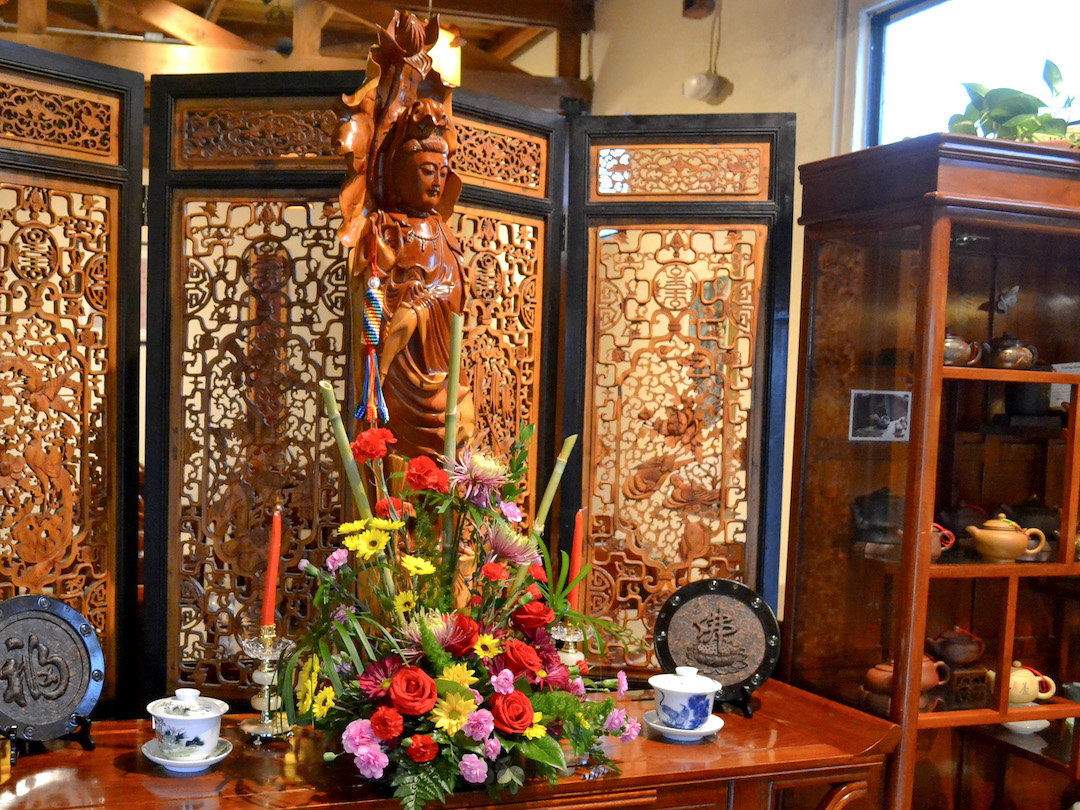
Anxi County’s famous tea bush cultivar has the unusual name Tieguanyin, sometimes translated as “Iron Goddess” or “Iron Goddess of Mercy.” This striking name comes from the legend that a man in Anxi was guided by Guanyin, the Bodhisattva of Mercy, to find this tea’s original mother bush, the ancestor of all Tieguanyin tea bushes. The “iron” part of the name comes from the tendency in Chinese culture to use iron to describe heavy things. While many modern Tieguanyin teas are more green in color, traditionally roasted wulong tea leaves have a dark, heavy color like cast iron.
Making traditional Tieguanyin wulong
During harvest season, tea pickers pluck only the top three leaves of new growth without the sprig, unlike modern green Anxi wulong, which retains the sprig. They pluck the leaves at or just before the stage of growth known as xiao kai mian, when the last new leaf is just opening and half the size of the next leaf on the stem. Harvesting at this young age means the leaves will have more long-lasting flavor through more infusions in the final tea. The harvest window for this grade of Traditional Tieguanyin is quite small, only five days from April 20-25.
Once harvested, the leaves are left to wither in the sunshine (shai qing) for a much longer period than modern Anxi wulong. The leaves need to lose much more moisture before processing, and are not moved on to the next step until they have lost their crisp shininess and become soft and dull.
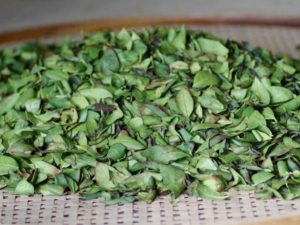
To encourage the oxidation of the leaf, the withered tea leaves are shaken in a rolling machine to gently bruise the leaves and break some of their cells. This lets the natural oxidation process happen more quickly. Because Chuantong Tieguanyin is more oxidized than green Anxi wulong, it is shaken four times instead of just three. Traditional Tieguanyin reaches at least 70% oxidation. To halt the oxidation process and keep it from progressing further, the leaves are fried in a very hot rolling oven at 200°C for 7-10 minutes. This fixes the leaves into the partially oxidized state that defines wulong tea as a category. Another distinctive difference from modern Anxi wulong is that modern Anxi wulong breaks off the dry, oxidized red edges of the leaves by packing them into a bag and hitting it against the floor. Traditional Tie Guan Yin does not do this and allows the oxidized edges to remain.
Once fried, the leaves are kneaded into shape with a kneading machine. The machine applies downward pressure as it moves the leaves over a grooved plate to generate the leaf’s long twisted shape, much in the same way as rock wulong is made. This is very different from the compact pearl style of modern green Anxi wulong, which is kneaded while wrapped in fabric in a very large ball weighing several kilos. Even the plate of the kneading machine is different, with raised knots instead of grooves.
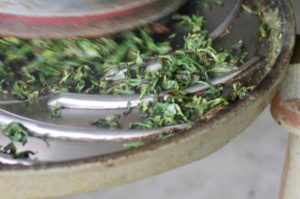
After the leaves have been fried and shaped, they are ready for drying. Chuantong Tieguanyin is roasted twice, longer and at lower temperature than modern Anxi wulong. The first drying roast at 90°C lasts 3-5 hours. The second roast is hotter but shorter, 110°C for 3 hours. Once dry and cool, the leaves are sorted to remove any older leaves too stiff to twist properly, as well as any broken pieces. The tea is put through one more very brief roast to remove any moisture picked up during sorting, and then the tea is complete.
History of Anxi Wulong
For centuries, Anxi wulong was made in much the same way as rock wulong in other parts of Fujian Province or Dan Cong wulong in Guangdong Province. This traditional style of wulong is what gave this type of tea its name, called wu long or “black dragon” after the long, dark, twisted shape of the finished loose tea leaves.
However, in the 1990s, Anxi producers began replacing the long, low-temperature roast of the tea with a quick, hot roast to retain the leaves’ greener character. Other adjustments were made to the processing to produce a much lighter, less oxidized, and intensely floral tea that was much more similar to a green tea. Because green tea has always been and remains the most popular type of tea in China, green-style Anxi wulong was wulong producers’ attempt to capture some of the very large domestic Chinese market for green tea. This tactic was extremely successful, and modern green Anxi wulong has become incredibly popular. The compact pearl style was introduced to protect the leaf from breakage during transport. These days, green-style Anxi wulong pearls have become the face of Anxi wulong in China.
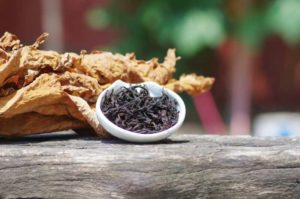
Some Anxi producers are now slowly moving back to making Chuantong Tieguanyin in the traditional way, with the darker roast and the long, twisted leaves. Both methods of processing yield very different end results, but both benefit from the high quality and unique clean character of the Tieguanyin bush.
High mountain cultivation and cultivar
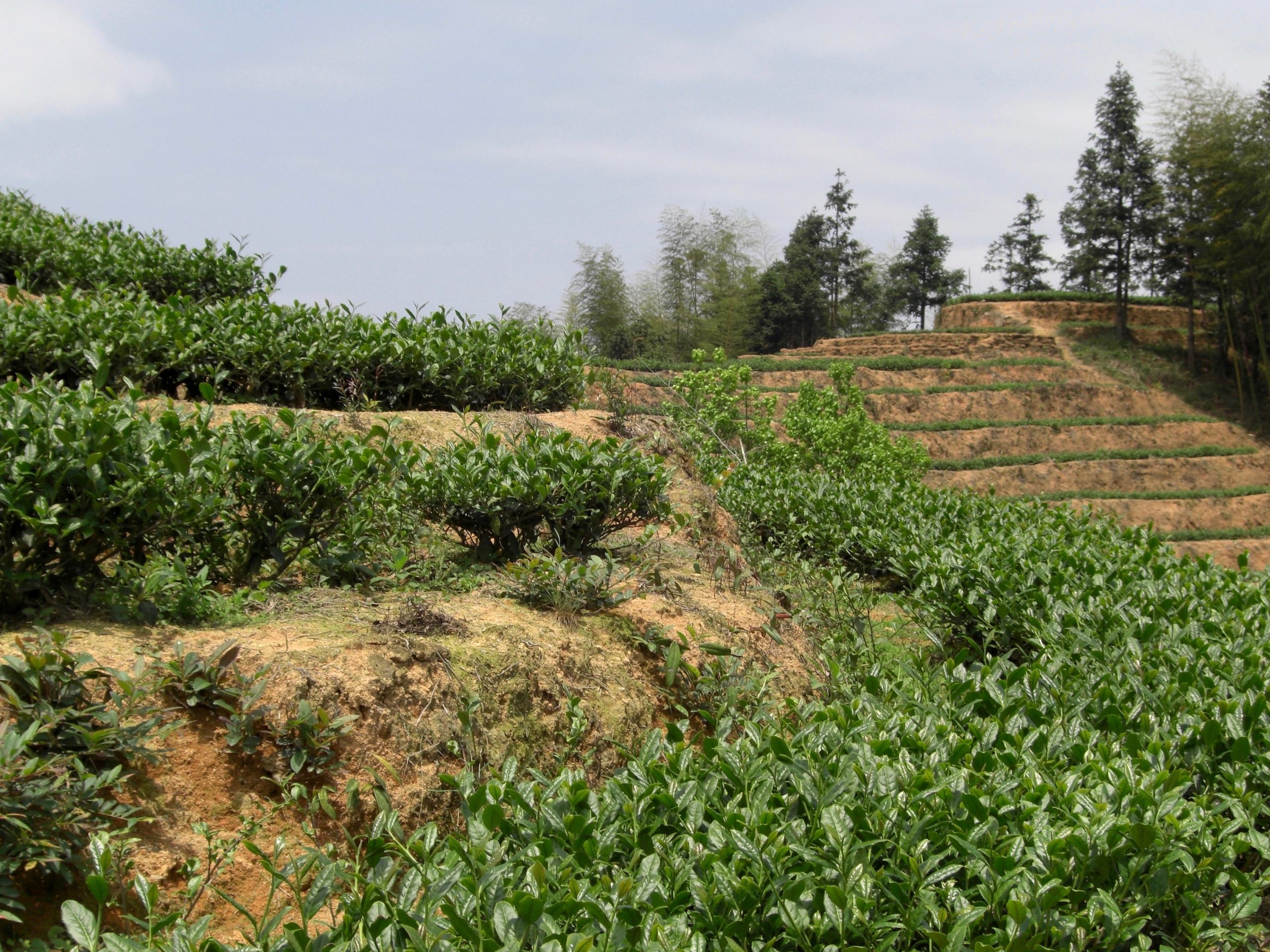
The Zhang family who produce our Tieguanyin teas grow the original Tieguanyin cultivar of tea plant on their farm in Anxi County. They do not blend it with other local cultivars, as is the case with most Tieguanyin on the market today. The leaves used to craft this tea are grown in a higher (above 1000m) mountain region that is far removed from Anxi City, where most Tieguanyin is made. In this high mountain region, the environment is relatively untouched and free from pollutants, and as as a result, the regions tea naturally carries a light wild flower aroma.

This high-altitude cultivation also enables producers to grow the higher-quality Hongxin “Red Heart” cultivar of Tieguanyin, which is better adapted to the cooler climate. Unlike the more common Lüxin “Green Heart” cultivar grown at lower elevations, Hongxin Tieguanyin displays a distinctive faint red blush in its youngest leaves, surrounded by mature green leaves.
No chemical fertilizer, pesticide, or herbicide was used in the production of this tea. Click here to read more about our promise to fair trade and the environment.

